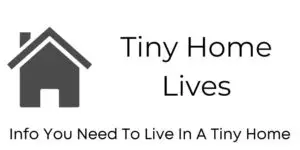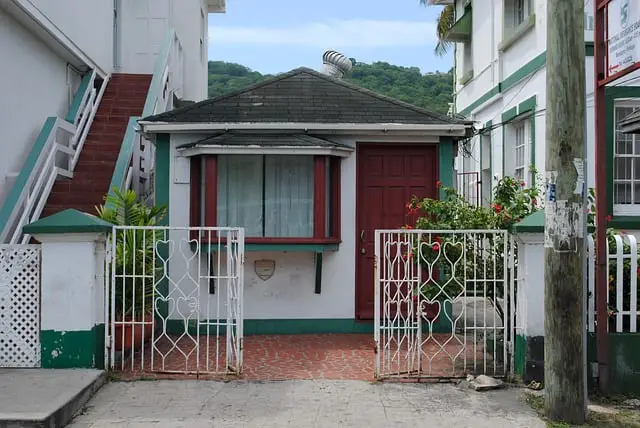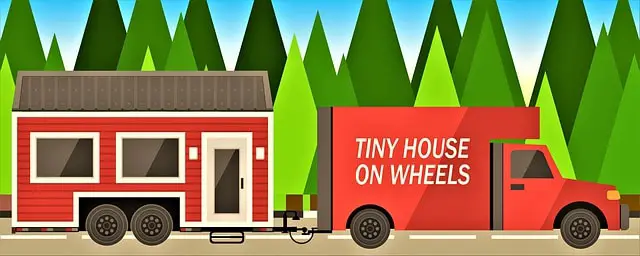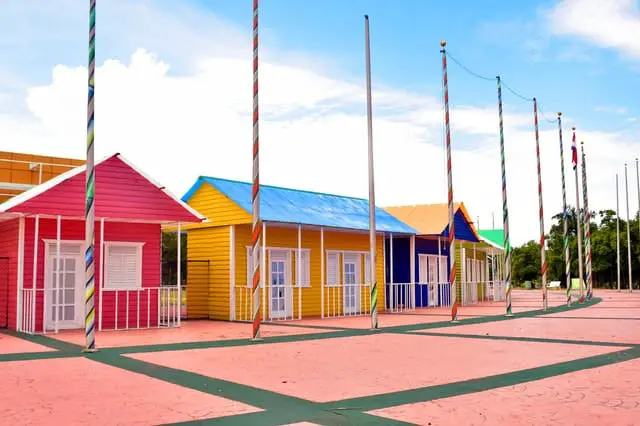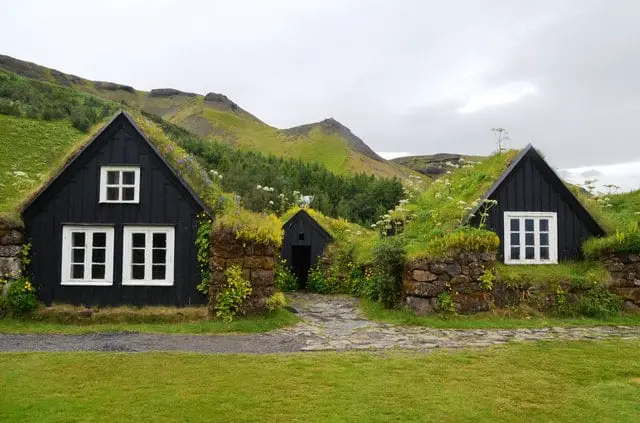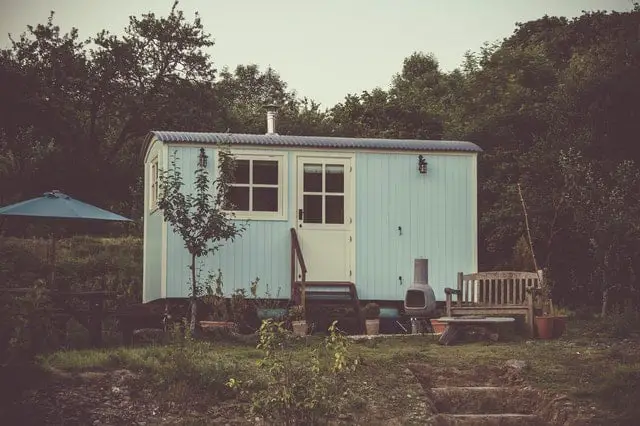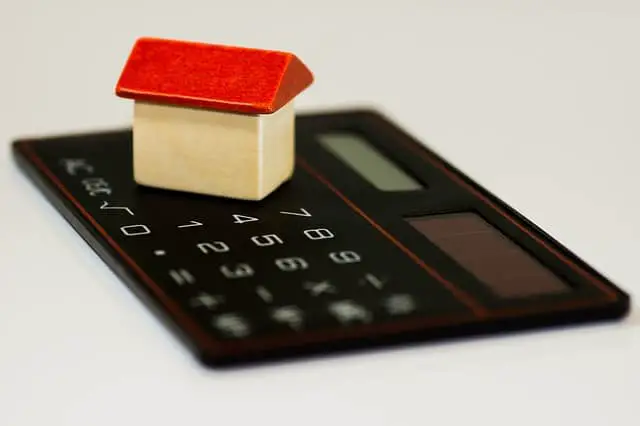Table of Contents
*This post may contain affiliate links. As an Amazon Associate we earn from qualifying purchases.
Building a tiny house from scratch can be a tall order for beginners. Tiny home kits are designed to empower do-it-yourselfers. With little or no construction experience, kits allow DIYers to build their own small homes. Imagine the pride, joy, and bragging rights that come with creating your own home.
Tiny houses are not only about architectural and social change. They can also act as a soothing balm for an aching soul. Kelly Lewis underwent a painful divorce and was left on her own to raise three young children. She wanted to make her kids self-sufficient as well as create memories that would last a lifetime. Determined to achieve her dreams, she started building a lakeside cabin for weekend getaways. In going off-grid, Laura lives a sustainable, simple, yet satisfying lifestyle.
What Is a Tiny Home
Tiny homes are small houses, generally sized under 400 square feet. Some come with solar panels and rainwater collection facilities. Tiny homes can be designed to live entirely off the grid, or they can be parked just about anywhere you want. Some are built on dedicated plots of land or parked in RV/mobile home communities. They generally need power and water hookups.
Tiny homes are about living simply and yet still having everything you need. It’s about economic freedom to live a bigger life instead of having a bigger house.
Tiny home kit
A tiny home kit comes with everything you need for assembling your little house. Even the screws and windows are included. A tiny home kit usually costs between $2,000 to $35,000. Minimal building experience is needed, and you just put your house together like a puzzle.
Tiny house shells
On the other hand, a tiny house shell costs between $5,000 to $60,000. They are complete with the roofing, walls, flooring, windows, and doors, all in place and delivered to your site. The interior may require some finishing and decorating.
Image via Pixabay
DIY tiny home
When building your home from scratch, there are additional things to consider. The building process gets broken into three steps: planning, sourcing, and construction. The advantages of DIY tiny homes include flexibility, involvement, and price. The disadvantages are time commitment and prior knowledge of construction. Hiring a professional construction crew can be costly, so DIY tiny home kits are a good option for people on a reduced budget.
Move-in-ready tiny homes
If you aren’t interested in DIY options, consider buying a completed tiny house. In this case, you can immediately move in and travel. If you have a larger budget, then this option might suit you. It is the most expensive option for owning a tiny home because the manufacturer is responsible for the entire construction process. These small homes may take several weeks for completion according to customization details.
Different Forms of Tiny Homes
Living in a tiny house is not only personal, cozy, and fun but financially and economically friendly as well. Micro homes have cropped up everywhere with all manner of eye-popping attributes. Many of these homes include glam interiors, low budgets, and eco-friendly credentials. If that’s got your attention, consider these types of tiny houses before you get started.
A tiny house on wheels
While researching a tiny home kit, consider the trailer that you’re going to use to as the foundation of your house. Laws, legal parking spaces, and whether your car or truck can tow your new home need to be considered.
The trailer acts as a foundation and is the essential part of your tiny home on wheels. A flatbed trailer is what you’ll need, but avoid getting a dovetail trailer because they are sloped. Make sure your vehicle will have enough strength to pull the trailer weight.
Image via Pixabay
A tiny house on a foundation
Building your tiny home on a foundation may prove beneficial in the long run. The initial cost may be more. If you have a permanent place for your home, you can harness the sun’s energy. Solar power and a rainwater catchment system are common additions. A stable foundation home can have a circular or other uniquely-shaped foundation. Mobile or trailer-mounted homes must be rectangular and meet the legal specifications of road travel.
In a tiny permanent house, you can grow a long-term garden, have goats or chickens, grow your own edible and medicinal herbs, and practice self-sufficiency.
Other types of tiny houses
Nowadays, tiny house no longer means a rectangle on wheels. Ideas are diversifying to change what it means to live tiny. As the tiny home living movement gains momentum, small house design is getting more innovative.
Examples include earthen/cob homes, earthen ships, and renovated school buses. Many small homes include natural materials, are highly energy efficient, and feature sustainable architecture. They have minimal reliance on fossil fuels and public utilities.
Advantages of Buying Tiny House Kits
If you have been considering the idea of building your own tiny home, you need to consider the pros and cons of buying home kits. Houses are expensive. For people without a steady income, it may seem a great risk to take on a huge mortgage. While the price tags of tiny home kits are indeed enticing, it pays to have a thorough understanding of small home living.
Image via Pexels
Predictable cost
If you’re building a tiny house from scratch, you’ll have to budget for a variety of expenses. Some of these include the cost of labor, materials, design costs, and tools costs. These costs can quickly spiral out of control.
On the other hand, the cost of tiny home kits is much more predictable. The only step after purchasing a tiny home kit is assembling the house. With everything included in the kit, extra costs are easy to determine before construction begins and there are fewer surprises.
Saves time
The majority of the grunt work, such as the selection and processing of materials, usually gets completed at the manufacturing facility itself. Depending upon your assembling speed and the complexity of your tiny house, you could move into your tiny home within a couple of weeks of delivery.
Minimal building experience
Tiny home kits are usually designed for DIY construction without the need for a construction specialist. Even a beginner can assemble the unit without much trouble by following the instructions that come with the kit. On the other hand, if you’re building from scratch, you will probably need professional help.
Environmentally friendly
Tiny houses produce a smaller carbon footprint. They consume less energy and often come equipped with eco-conscious technologies such as solar panels.
Factories produce tiny home kits on a large scale, so they have ways and means to recycle any waste or byproduct obtained from one production cycle to the other thereby reducing waste.
Image via Pexels
Customization
Tiny home kits come in different shapes and sizes, and they have varied options for customization and design. Manufacturers will often be willing to fulfill the customers’ request for additional customization.
Disadvantages of Buying Tiny Home Kits
The biggest disadvantage of living in a tiny house is that there is less room for everything. Whenever you get into an argument, there’s no other extra space where you can escape. Starting a family and hosting friends becomes difficult. You could start to feel claustrophobic and soon develop cabin fever.
Similarity
Most of the tiny home kits that are sold online or in malls look generic. There are options for custom-made tiny home kits, but they are usually more costly. For a potential buyer on a budget, customization of a small house is not always possible.
Less flexibility
Following the architectural blueprint and instructions that come with tiny home kits is essential. If you try to deviate from the original design, it may create problems in the final design. The plumbing, piping, windows, and doors that come along with the kit may also be limited.
Image via Pexels
Factors to Consider When Buying Tiny Home Kits
When life seems complicated, some people choose smaller homes to have a simpler, but more significant life.
Evaluate short- and long-term goals before buying tiny home kits
One-third to one-half of all American income goes toward housing needs. A tiny house may be inexpensive and fit your current lifestyle and budget. However, you must consider the resale and investment potential of these homes. They might be less attractive to people looking for an investment in their future.
Consider your lifestyle and family size
The size of your family and your lifestyle patterns must play a central role in your decision-making process. If you have toddlers, they’ll need a lot of space to run around. On the other hand, teenagers like to have privacy or to have friends over. As busy parents, you may want a quiet area to spend your spare time. A tiny house might not be suitable for a large family.
A place to position your tiny house
If you have land and plan to assemble your tiny home on site, there are steps you must take before construction begins. Conduct safety tests to make sure your house is ready for connection to water and power hookups.
Type of home
Decide whether you want your tiny house to be mobile or stationary. Being clear will help you to zero in on the type of small house kit you’ll be buying. There are many options to build a space-efficient domicile. It may be on a slab, trailer, or foundation. If you’re building on a foundation, it will have to conform to your local building codes. Homes kept in a park or mobile home community must meet the recreational vehicle (RV) home standard set by the Recreational Industry Vehicle Association.
Check the building codes and standards in your area
Familiarize yourself with the local building codes. Laws vary from city to city. Tiny houses must withstand natural disasters. Purchasing tiny home kits that comply with The US Department of Housing and Urban Development Standards is the best plan.
The kinds of materials you’re using
Make sure the home kit you’re purchasing is made of quality materials to withstand potentially harsh environmental conditions in your area.
Different factors contribute to the tiny home kit’s durability. Check the type and grade of wood that comes with the package. Research the treatment procedures used for the wood. Also, make sure you take the time to read the reviews of any tiny house kit you’re planning to buy.
Steel tiny home kits have several advantages. They have a higher return on investment, are lightweight, and robust. The pre-assembled wall and roof panels make it easier to assemble. Moreover galvanized steel is pest, rot, and rust resistant.
Check the amenities included in your kit
If plumbing is included, make sure you know how it works. If plumbing is not included, see if the kit contains recommendations or instructions to add it. Check the configuration for electricity. Will it be plugged into the grid or sourced from solar power? Verify that the kit includes insulation or instructions for weatherproofing. Comfort is paramount in your little home because you’ll be spending a considerable amount of time there.
Do your own research
Read reviews about the product you’re buying. Even though reviews may be subjective, they can highlight potential issues. Some buyers may have blogs and write about their experiences. Reading them may help you get a clear idea about the product.
Where to Buy Tiny House Kits
Searching online is the quickest and easiest way to find tiny home kits. Using general search phrases and including your location information can narrow the search parameters. For example “tiny house kits for sale in Alabama.”
Look at the resource page of companies that market DIY kits. Amazon offers several tiny home kits. Most refer a buyer to the seller for customization options and final pricing. Some manufacturers offer delivery and assembly options. Depending on the kit you select, there may be options for window, door, or insulation upgrades.
You might find local manufacturers or distributors for tiny home kits. They may offer models that you can see assembled and finished, too.
Image via Pixabay
Affordable Tiny Home Kits
If you’re on a budget, then DIY tiny house kits are the way to go. Some tiny home kits cost less than $5,000. A professionally built Lilliputian house can cost as much as $80,000. Affordable tiny home kits are appealing for many reasons. You can avoid a mortgage loan, the setup is quite simple, and it does not require prior building experience.
Tiny home kits may only include the outer shell of the structure. The kits may lack features such as electrical wiring and plumbing fixtures. Generally, additional features add extra cost. The cost of cheap tiny home kits with add-on costs might end up being more than just investing in a kit that comes with all those features already included.
The warning here would be to perform due diligence. Make sure that you understand everything included with your kit. Be aware of added expenses that might crop up while making your new home move-in ready.
Welcome to the World of the Tiny Home Living
Building a tiny house does not have to be time-consuming for beginners. With some research, you’ll be able to buy a tiny home kit that meets your lifestyle needs and fits into your budget. Once you’ve finished assembling your tiny house, moving in and getting comfortable should be a piece of cake. Step into your new tiny home, invite your friends, sit back, and enjoy.
